October 26, 2020
New HF Beam Installed at W1MX
After over two years of planning since it was damaged in a severe windstorm in the fall of 2018, the W1MX primary HF beam antenna, a Mosley Pro-96 that has served the club for over 20 years, was replaced on Monday. After much debate, the club decided that, given the historical performance of the Pro-96, the simplest and safest option would be to replace it with a new antenna of the same model. A replacement was purchased a year and a half ago.
Over the past several months, the W1MX antenna tower on Walker Memorial, originally installed in 1959, has received much needed maintenance prior to installation of the new antenna. The tower was inspected and repainted for what may be the first time since its original installation. In the near future, the original guy wire system will also be updated to ensure the tower remains stable and can continue to serve MIT’s amateur radio community for years to come. Plans are also in progress to install new equipment graciously donated by one of our alumni, L. Dennis Shapiro EE ‘55, SM ‘57, to enable remote operation of the station now that the new antenna has been installed.
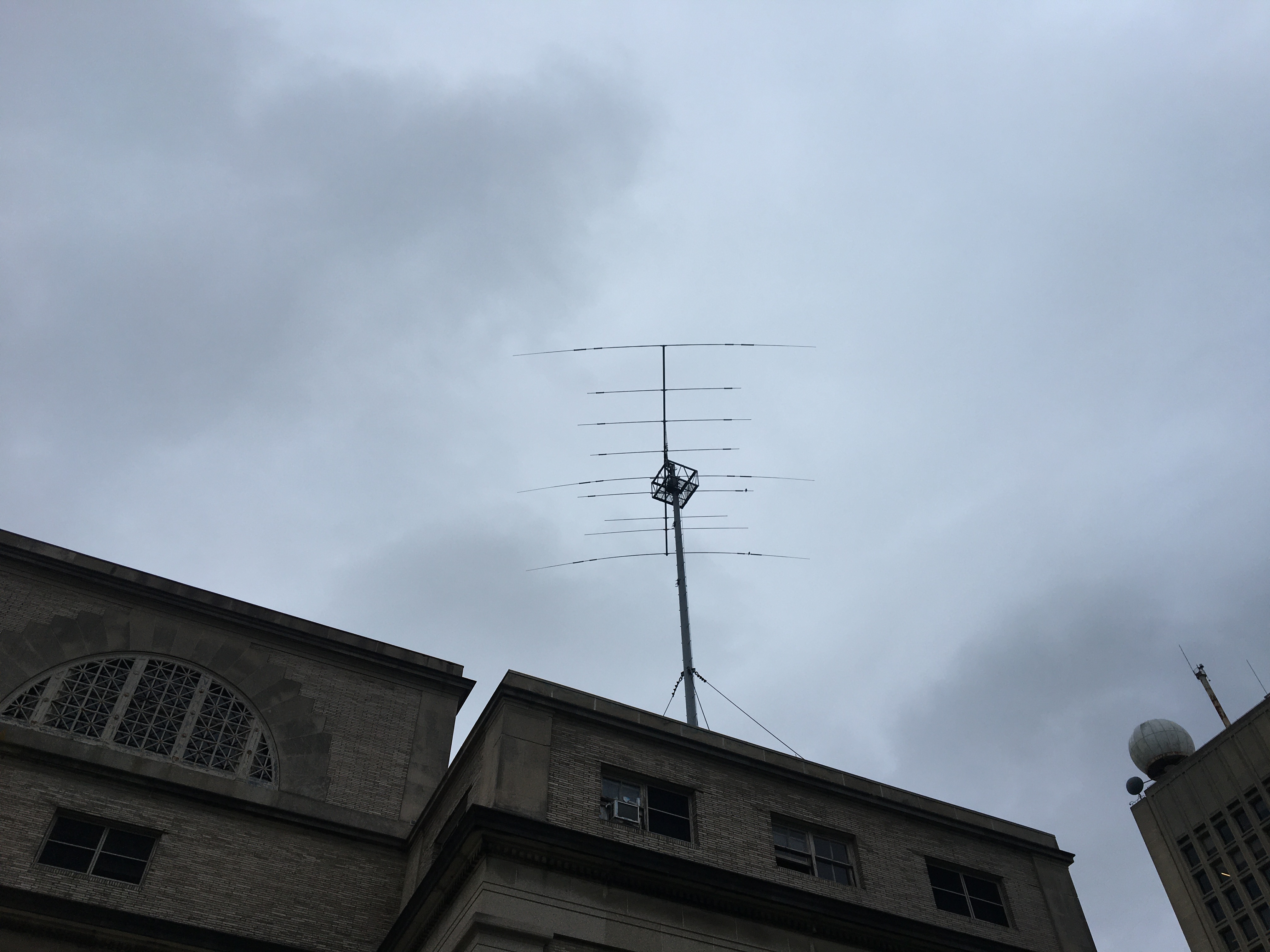
Building the Antenna
Because of restrictions due to COVID-19, most Radio Society members were sadly unable to be present for the antenna’s assembly and installation. Originally, the club had hoped for the project to be an opportunity to introduce new members to amateur radio, but we decided that under the current circumstances, with winter coming and with few students on campus and few likely to be there for the coming semester, it was more important to begin to reestablish a functional station.
To that end, the new Pro-96 antenna was assembled on the lawn adjacent to the building over the preceding week by a skeleton crew from Hampden Communications, a New England broadcast engineering firm run by Kurt Jackson. Some assistance was also provided by Daniel Sheen, one of the few club members with authorized campus access, who assisted with fine tuning and electrical checks of the antenna.
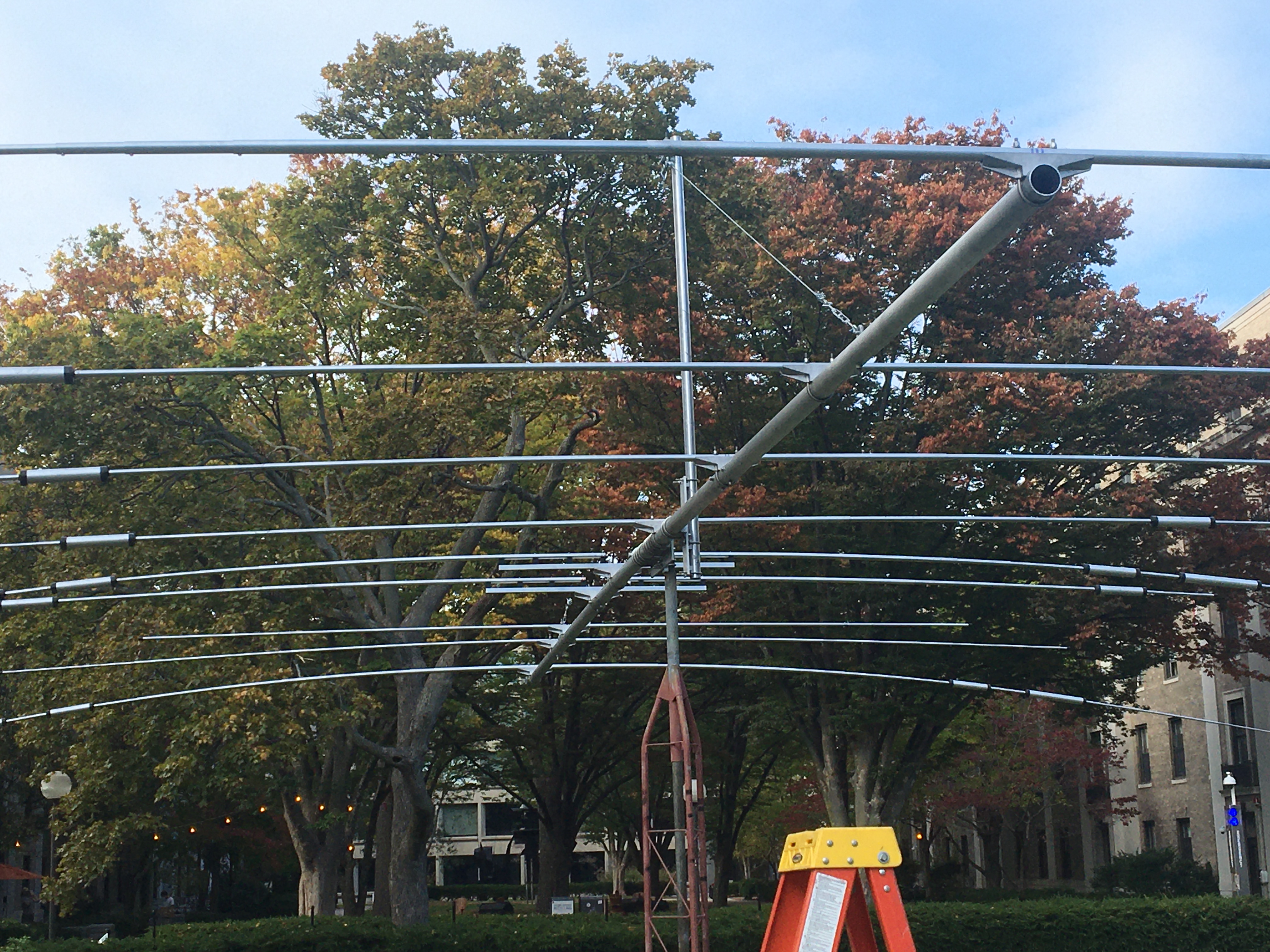
To enable measurement of the antenna prior to installation, a temporary tower was built on the lawn. The entire antenna was then assembled 10ft above the grass. This proved to be a wise decision; although assembly went smoothly, a single resonant trap on the driven element was accidentally reversed. The error was caught when the tuning on 40m was observed to be too high, and was swiftly fixed. After a final check Sunday night, the antenna was officially ready to be installed.
The Installation
The day began in the cold and dark hours of the pre-dawn morning, awaiting the arrival of a crane from CJ Shaughnessy due to appear at 6:30am. As cranes are wont to do, it took longer than expected, but only slightly, appearing at about 6:50. By the time the crane had been moved into position the sun was just beginning to glow dimly through the clouds.
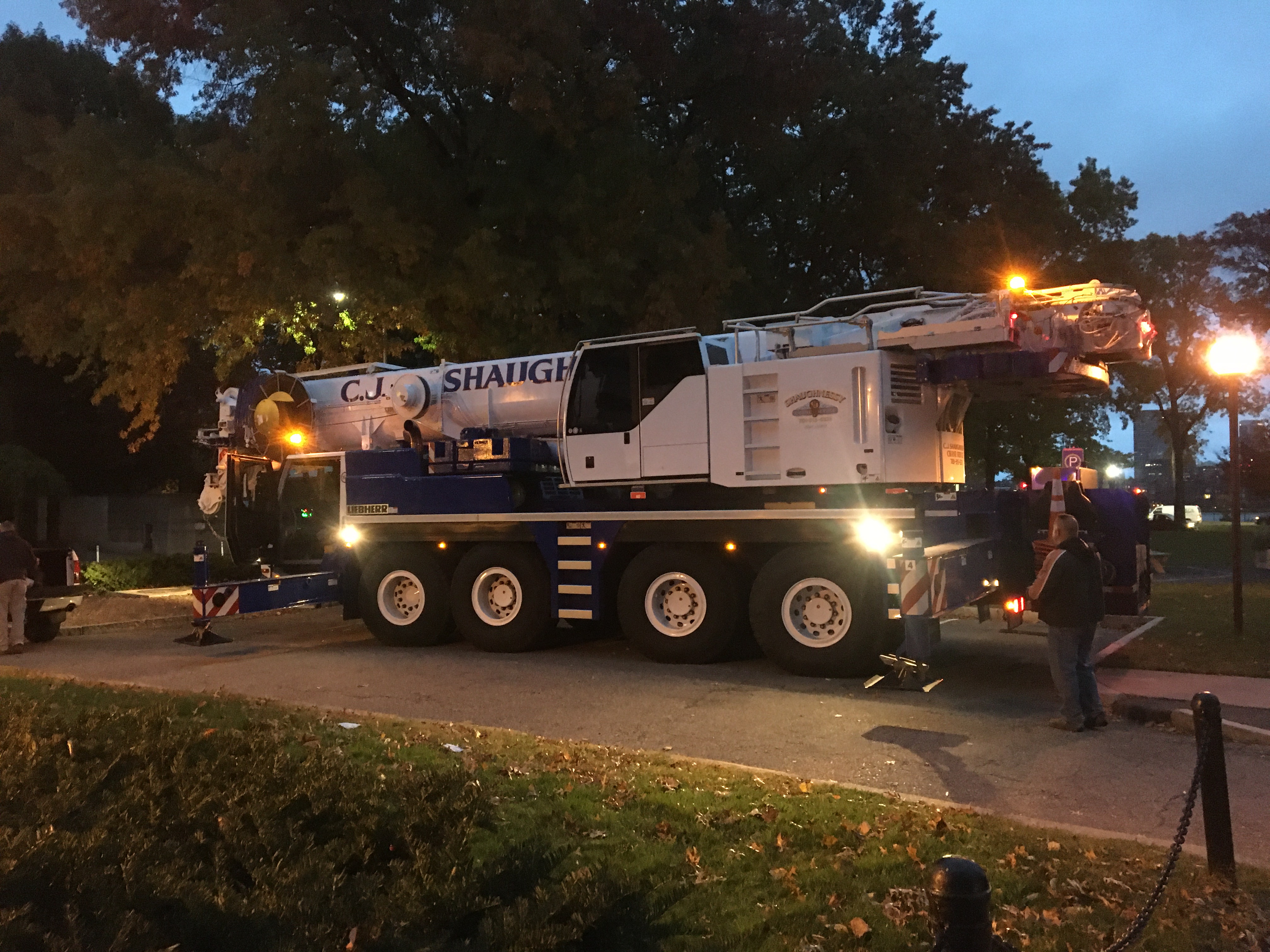
While the crane operators finished setting up, a few last checks were performed. The feed line was almost as old as the existing antenna, so there was a question of what condition it was in after almost 20 years of Boston weather. Additionally, the correct rotor position needed to be determined, as the antenna had drifted over time as the bolts clamping it to the mast loosened slightly.
Daniel powered up the main console at W1MX for the first time since MIT was evacuated in the spring. According to the readout, the antenna was pointed southwest, an indication that bore little resemblance to its actual northeast bearing. The feedline to the tower was then disconnected from the radios and its SWR measured with a RigExpert AA-600. Unsurprisingly, the damaged Pro-96 was severely detuned, especially on 40m, but it still clearly dipped in SWR in the vicinity of the ham bands. Very high SWR far from the ham bands also indicated that feedline losses likely remained reasonably low.
With reference measurements of the existing antenna in hand, it was time to remove the Pro-96 that had graced the tower at W1MX since the late 1990s. Kurt donned a harness, clipped onto the safety cable, and scaled the tower to the crow’s nest, 110ft above the ground. A flock of birds who had been quizzically watching the proceedings from their perches on the antenna elements scattered at his approach. Once there, Kurt guided the crane operator in, attached a sling around the antenna boom, and loosened the bolts holding it to the mast. At his direction, the crane operator lifted the antenna free of the mast, and then gently lowered it to the lawn next to its soon-to-be replacement.
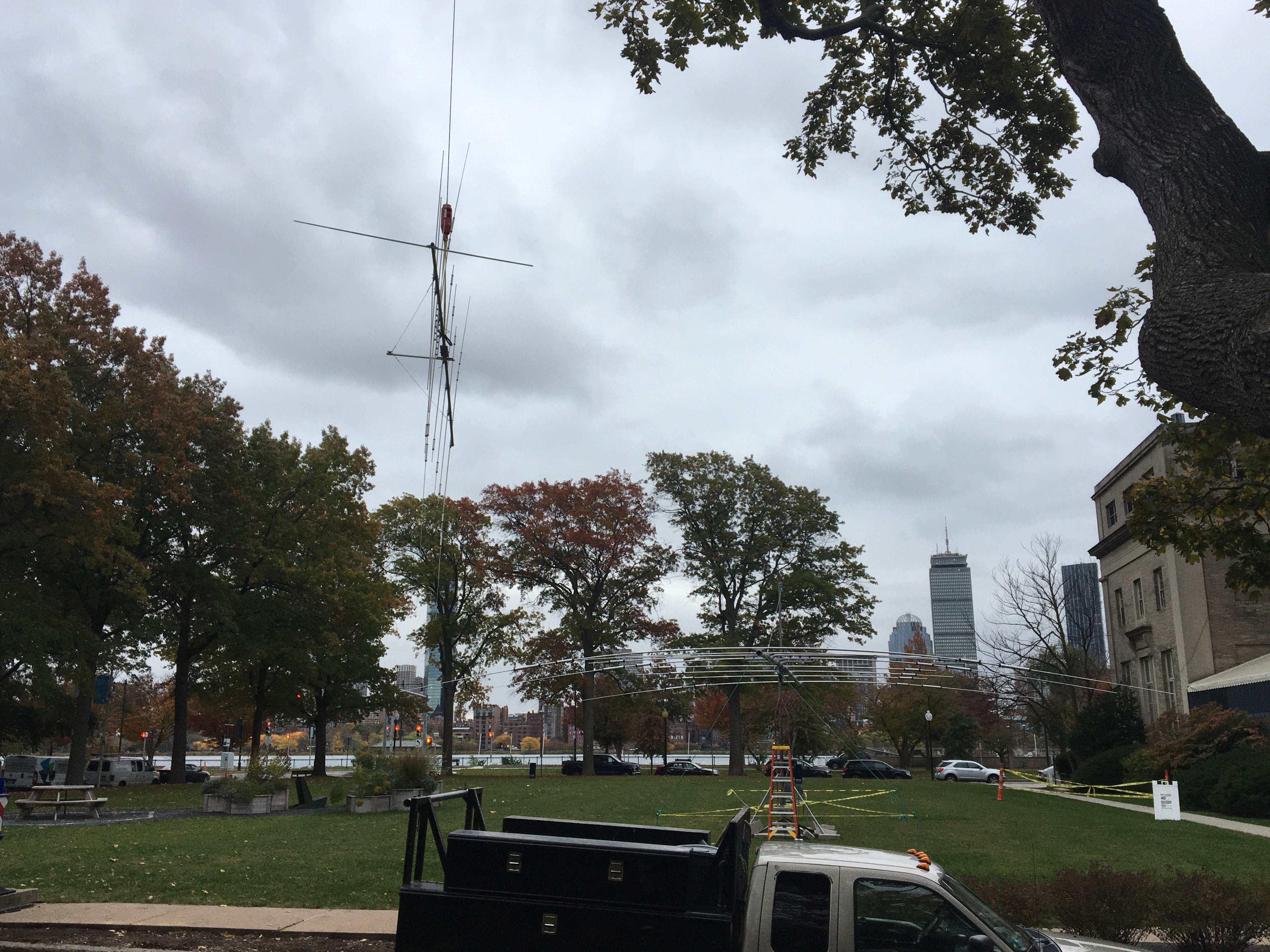
Before lifting the new antenna to the tower, Kurt had the crane operator lower the new antenna from its temporary tower to the lawn. A final inspection was made and photos taken, and then the shiny new Pro-96 was lifted up to its new home. Once on the tower, the antenna bearing was aligned to the rotor readout in the station with a compass, the cable wrap around the mast was precisely adjusted for the antenna stops, and the RF connection was made and sealed.
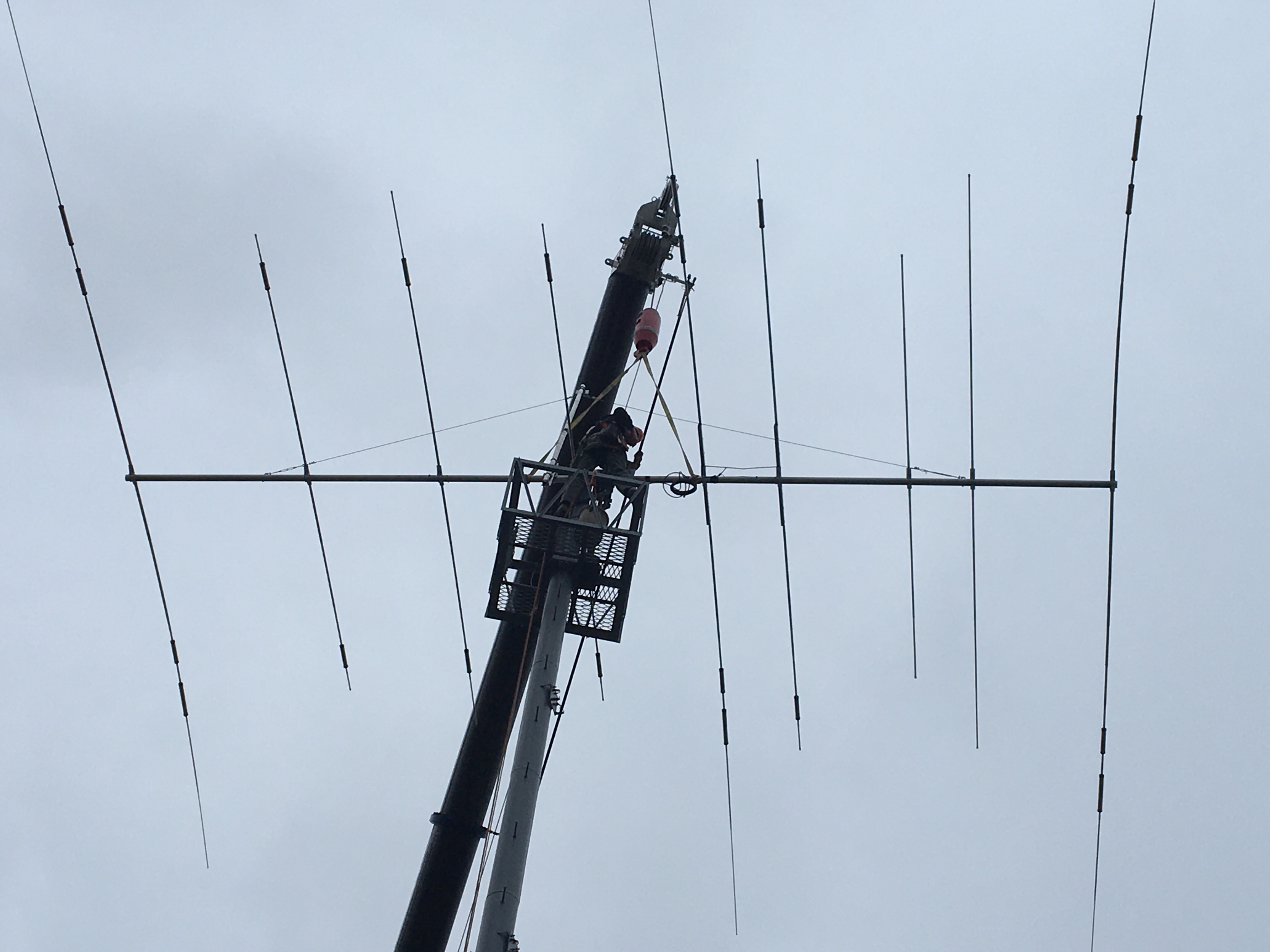
Measurement of the new antenna showed it nearly exactly at the intended set points, and clearly demonstrated the feed line was still in good condition. The 40m minimum SWR was measured to be about 1.15 to 1 in the lower half of the phone segment of the band, tuned a hair higher than we had hoped but still very usable in the upper CW portion. 20m showed a similarly low SWR and proved a good compromise for CW and SSB operation. The other bands all fell precisely where they were supposed to as well, with characteristically low SWR.
With the new antenna installed, the only remaining task was to disassemble the original that now lay upon the lawn. Upon inspection, most parts of the old antenna were in remarkably good shape. The hardware was beginning to degrade but the antenna elements appeared in remarkably good shape with the only exception being the 40m reflector, which had disintegrated during a series of storms. Because of this, the club will likely refurbish the old Pro-96 and either resell it or retain it for spare parts.
In total, it took less than 6 hours from the crane arrival to packing up the old antenna. We were all out by noon, and the birds were already settling on their new perch.
Over the next month, one of the major goals of the Radio Society will be to coordinate access to set up equipment for remote operation of the station. Our hope is that soon, in spite of the pandemic which has scattered MITs amateur community across the globe, members of the club will once again be able to surf the HF bands from W1MX.

